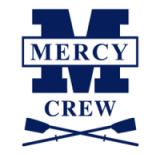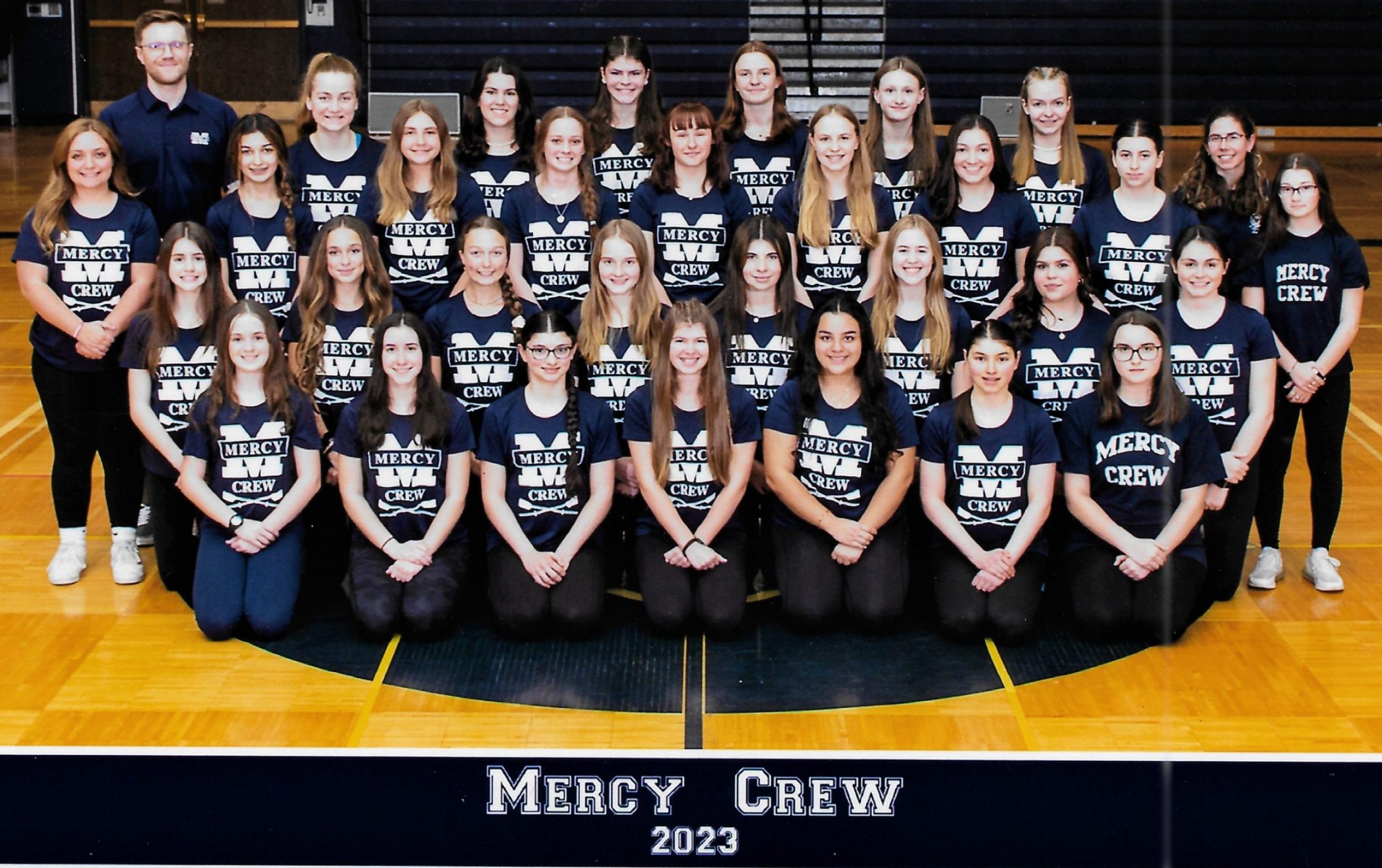The Language Of Rowing
Rowing Categories
Sweep: Type of rowing in which each rower has one oar. The oars are about 12 feet long.
Scull: Type of rowing in which the rower has two oars. Each oar is about 9 ½ feet long.
Types of Races
Head race: Long-distance race, usually held during fall regattas. Each boat is sent down the course, one after another, typically at 10 second intervals and timed between the start and the finish line. Head races are usually between 4 kilometers and 5 kilometers in length.
Sprints: Shorter races are called sprints, usually held at spring regattas. These races are generally 1500 – 2000 meters in length. For sprints, boats all line up at the start together, and all start on the judge/referee’s command. These races are also timed, but it is easier from a spectator’s perspective to tell who is winning.
Boat Types
Shells: Boats used in rowing. The shells are thin, with a special fiberglass, carbon, or wooden laminated exterior structure just 3/32nds of an inch thick over a framework. The bow and stern decks are covered with either plastic cloth or a fiberglass top. The boats have sliding seats, which run on a track about 27 inches long, so the rower moves back and forth she rows.
Sweep: A shell configured so that each rower has one oar. Oars on a sweep shell are normally alternated from side to side.
Scull: A shell configured so that each rower has two oars. These shells almost never have a coxswain.
Steering is generally accomplished by applying more power or pressure to the oar(s) on one side of the shell. The hands overlap (usually left over right in the U.S.) during part of the rowing cycle, or are left in front of right.
Boat Terms
Blade: The term for the oars used in rowing. The oar is actually composed of the handle, the shaft, and the blade. The blade is the surface that is in the water during the drive. There are two types of blades: hatchets and spoons. The terms describe the surface of the blades; spoons are symmetrical, and hatchets are asymmetrical. Blades are painted in the team colors. Learning to use the blades correctly is the most difficult part of learning to row; if the blade doesn’t move through the water at exactly the right angle, it will pull that side of the shell down and slow its progress.
Bow: The nautical term for the forward part of the hull (the part that gets to the finish line first with the bow number). The rower in the most forward seat is called the bow.
Bowball: A rubber ball attached to the most forward part of the bow to protect the boat and others upon impact. A bowball has the same function as a bumper.
Cox Box: Cox boxes come in three parts: the box itself, the microphone, and the speaker system which is in the boat. A boat equipped for a cox box has a speaker system fitted down the length of the boat beneath the seats which relays whatever is spoken. The most useful feature of the cox box display is the “rate meter”. This calculates the number of strokes which would be taken in a minute if the rowers continued at a uniform speed
Foot stretcher: The parts which attach the shoes to the boat, including the footboard, the adjustable metal bars, and the wingnuts which secure it to the boat.
Hull: The skin of the boat which is in direct contact with the water. The hull supports the weight of everyone on the water. The hull is rigid and fragile and should not be stepped onto when getting into or out of the boat. Any obstruction in the water can puncture the hull.
Oars: The sweep oars are 12 feet in length and like shells, lightweight and finely designed.
Oar Lock: Piece of hardware on the end of the rigger that the oar goes into. It is U- shaped and has a locking bar (called a “gate”) to keep the oar from coming out.
Port: The nautical term for left. The left side of the shell as one faces the bow. Also, the term for a sweep rower on that side – her blade and rigger are on that side, usually an even-numbered rower.
Rigger: the metal or carbon fiber bars that extend from the hull at each seat. Riggers are typically bolted onto the boat with 4 or 6 bolts. Attached to the riggers are oarlocks, topnuts, and pins.
Rudder: Steering device at the stem. The rudder is connected to cables (tiller ropes) that the coxswain uses to steer the shell.
Seat: Seats in the boat are numbered 1 through 8 or 1 through 4 beginning in the bow of the boat. The rower sitting in the bow, the part of the boat that crosses the finish line first, is the bow seat or No. 1 seat. The person in front of the bow is No. 2, then No. 3 and so on. The rower closest to the stern that crosses the finish line last is known as the stroke. The stroke of the boat must be a strong rower with excellent technique, as the stroke is the person who sets the rhythm of the boat for the rest of the rowers.
Skeg: (or fin) A small fin located along the stem section of the hull. This helps to stabilize the shell in holding a true course when rowing. All racing shells have a skeg. The skeg should not be confused with the rudder.
Slide: Two tracks upon which the rower’s seat is fixed. The seat moves forward and backward on the slide, enabling the rower to “gather up” his or her body at the start of the stroke and then use the combined power of the legs, back, and arms when actually executing the slide.
Slings: (or boat slings) Collapsible/portable frames with straps upon which a shell can be placed temporarily.
Starboard: The nautical term for right. The right side of the shell as one faces the bow. Also, the term for a sweep rower on that side – his blade and rigger are on that side, usually an odd-numbered rower.
Stern: The nautical term for the back of the boat. More precisely, this is the farthest point on the back of the boat.
Rowing Terms
Back-it: Means to have the rowers place their blades at the release position, squared, and push the oar handle towards the stern of the boat. This motion causes the shell to move backwards.
Catch: The beginning of the stroke when the blade enters the water.
Coxswain: The person who sits at the stern of the shell and steers, gives commands to the crew and generally acts as an “on-site” assistant to the coach. Because coxswains don’t pull an oar, relatively lightweight people are sought for the position; however, a good coxswain will have as much competitive spirit as the rowers and can make a considerable difference to a crew’s success.
Crab: “Catching a Crab” is used to describe the situation when a rower’s blade gets stuck in the water and he/she finds it difficult or impossible to get the oar out of the water at the end of the pull-through. This may result in slowing the boat down and throwing off the set. This term is from the claim that “a crab grabbed the blade and wouldn’t let go.”
Drive: Just after the catch, the rower begins pulling back on the oar. Initially, the body position should not change the legs are doing all the work, then the upper body begins to uncoil, and the arms start their work of pulling the oar through the water. Finally, the rower pulls his or her hands quickly to the body, finishing in a “layback” position.
Erg or Ergometer: A rowing machine. An “erg” allows beginning rowers to learn the basics of the stroke before going on the water and all rowers to develop their conditioning. The verb “to erg’ means to work out on an ergometer. An “erg piece” is a particular set of work on the ergometer, such as rowing 2000 meters. Erg tests are used by coaches to ascertain an athlete’s aerobic and endurance capabilities.
Feather: Refers to the rotation of the blade at the finish when the blade is parallel to the water’s surface.
Feathering is the actual motion of turning the blade.
Finish: The final part of the pull-through just before the oar is taken out of the water.
Full pressure: The top level of exertion of which a rower is capable.
Hold-Water: Tells the rowers to stop rowing and to square their blades immediately. Used to avoid collisions.
Let-her-run: The command to stop rowing and let the oars rest flat on the water.
Novices: Rowers who are rowing for the first season.
Piece: A unit of training, i.e. ” We will be doing two 1000-meter pieces today.”
Power 10: A series of ten strokes where a crew gives additional power (maximum effort). This is often used as a racing technique to advance on another crew.
Pressure: The amount of effort a rower puts into the stroke. Races, of course, are conducted at full pressure, but practices and warm-ups may entail a series of strokes at half or three-quarter pressure.
Racing Start: The first strokes of a race, usually shorter and quicker than those used in the body of the race.
Recovery: The act of bringing the oar back from the finish in preparation for another pull-through. This is the relaxation part of the stroke.
Release: The act of getting the oar out of the water at the end of the stroke and beginning the recovery (gathering the body with the knees coming up) for the next stroke.
Rushing: Term for when rowers move too quickly along their tracks into the catch. The boat will lose the feeling that it is gliding or “running out.”
Set: The balance and feel of the boat. The most efficient boats are balanced evenly over the center line and remain so throughout the strokes. If rowers are not aligned properly, or a rower swings off center as part of his or her motion during a stroke, or if rowers on one side of the boat are pulling with more or less force than the other side, the set of the boat can be altered, introducing drag.
Stroke: The stern-most rower in the boat that sits just in front of the coxswain. The stroke sets the pace for the rest of the crew, responding to the commands and encouragement of the coxswain.
Stroke rate (Rating): The number of strokes a crew takes in one minute referred to as strokes per minute (spm). A stroke rate can range from 0 spm (sitting still) to 44+ spm (sprint). You can calculate the spm by counting the number of strokes taken in 15 seconds, and multiply that number by 4. Most amplifier systems have a meter to tell you what your stroke rate is.
Weigh enough: Stop whatever you are doing; rowing, a drill, walking with the boat, etc.

